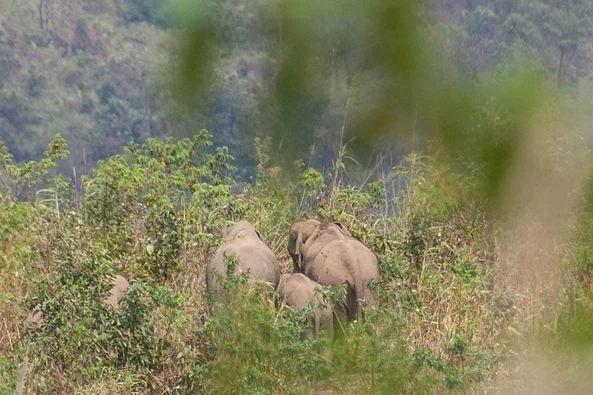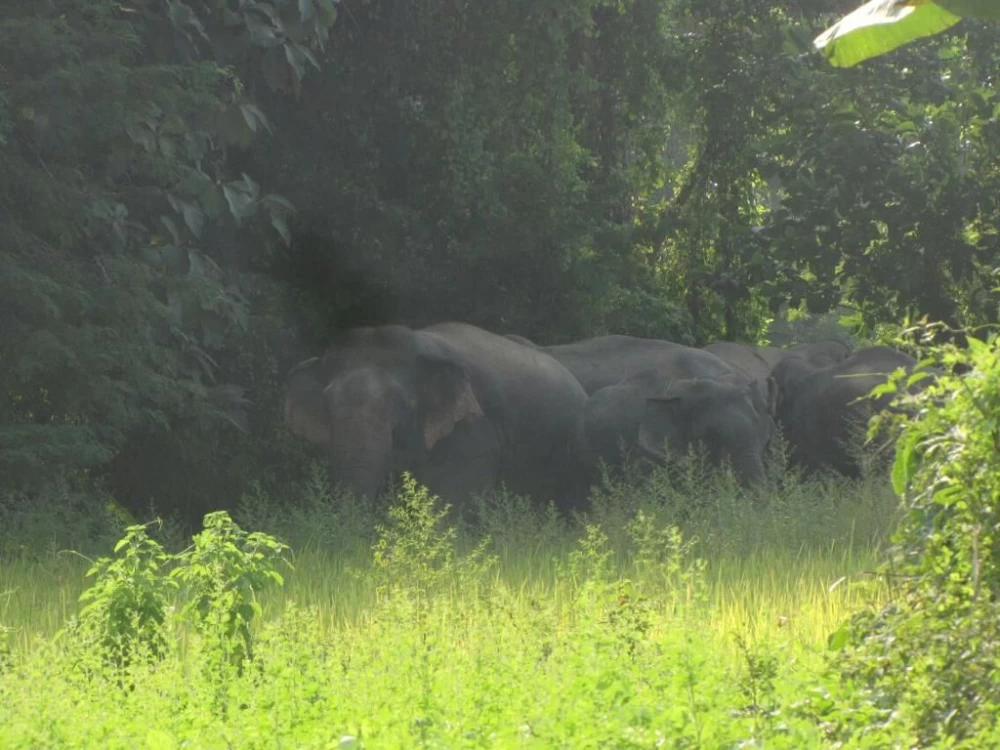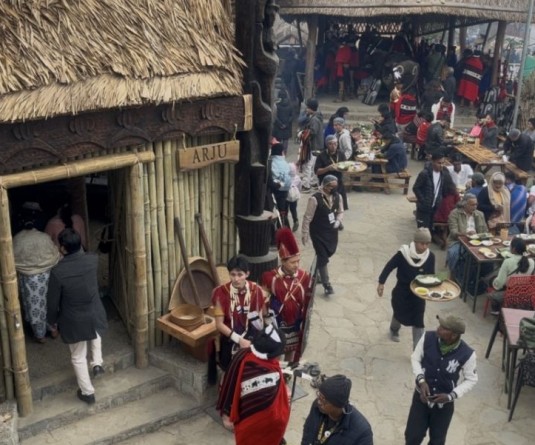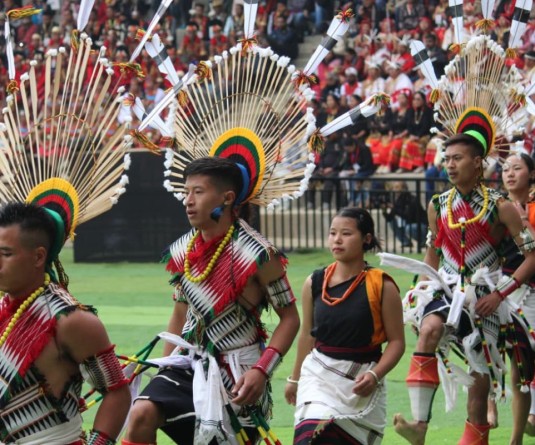Elephant seen in Zukihe village under Dimapur district. (Photo Courtesy: Dimapur Wildlife Division)
.jpg)
Vishü Rita Krocha
Kohima | October 6
Even as the Wildlife Week (October 2-8) is being commemorated to increase the awareness among the common mass that there is a ‘symbiotic relationship between the forest, forest-dwelling animals, ecosystem services, and humans’, the issue of human-elephant conflict in Wokha has remained one of the most pressing issues confronting Nagaland state in this regard.
While there is no permanent solution to this according to Hukai H Zhimo, Forester 1, Head of Wildlife Crime Control Unit, Dimapur Wildlife Division, “a short-term solution would be setting up anti-depredation squad comprising of 5-6 members per affected village who could guard their fields especially during harvest time.” He impressed upon that the only chance to minimise the human-animal conflict in the area is to have a committee coming forward from the elephant bearing villages and also increasing fodder species for elephants such as banana, bamboos.

If such activity can be carried out and elephants have enough food in the forest, he said that, “they won’t come to the human habitat.” During the 1980s, he recalled that there was an Elephant Corridor between Assam and Wokha but pointed out that “because of increase in human population and activity, settlement, more agricultural activities and plantation”, it has become narrower.
Terming them as “trapped elephants”, he went on to say that, some decades back, “the elephants have more than approximately 150 sq kms corridor from Assam corridor to Wokha area up to Baghty and Doyang with good forest and very large area to forest.” During this time, he also observed that there was very low case of human-elephant conflict. The Elephant Corridor, he pointed out has been reduced to 50 sq kms since.
Since elephants need very large area to forest, he further observed that “they come to the fields and cause damage to crops” as the area of their habitat has been reduced and disturbed by human activity. “Their corridors are blocked, they are going from one village to other— Baghty to Bhandari, I am told they have come up to upper Wokha also”, he highlighted.
While the elephant population is bound to keep growing, he remarked that, “they will keep increasing and their habitat will keep on shrinking.” “We are encroaching into their habitat. If we keep their habitat intact, there is no chance that they would come and damage crops and properties”, he asserted. He also cited that while warding the elephants, some villagers might have caused injury and that it’s possible for the elephants to come back for revenge as well.

‘Elephant bearing villages can propose for Elephant Community Reserve’
While it is estimated that there were around 100 elephants in the Wokha area during the 1980s, Zhimo, stated that “there are more than 200+ elephants in Wokha district whereas the area has a carrying capacity of only 50-60 elephants.”
Reiterating that there is no permanent solution to the human-elephant conflict, he emphasized that “we, human beings should try to coexist”. Another chance to minimise the conflict, he cited, would be to create ‘Elephant Community Reserve’ wherein elephant bearing villages can come up with a proposal for Elephant Community Reserves.
In the meantime, he emphasized on the need for empowering the elephant communities while also observing that one of the challenges is the system of land ownership in Nagaland, which he termed as “very difficult.” The problem is that nobody owns such large areas, he pointed out, while elucidating that “in a 100-hectare land, there will be more than 50-60 owners, and to bring all of them together is very difficult.”
However, he urged that everyone is responsible towards wildlife conservation and advocated that everyone has a role to play in spreading awareness on the importance of wildlife among friends and their circles. “It’s only because they are unaware that wildlife is destroyed”, he put across.
135 notified Community Reserves in Nagaland
There are about 135 notified Community Reserves in Nagaland while during the 2018-2023 period, more than 51 Community Reserves have been surveyed, mapped and demarcated. Kohima district has the highest number of Community Reserves spread across villages such as Jotsoma, Khonoma, Gariphema, Kigwema, Kidima, Meriema, Viswema, Dihoma, Tsiesema, Nerhema, Sakhabama, etc.
Zhimo informed that there are many new proposals coming in towards this end while observing this as a ‘good thing’ as villages themselves are coming forward and are enforcing it. “We are letting the village community manage their own forest. The Department is supervising to keep the forests intact”, he highlighted.
One of the criteria to have a Community Reserve is to have a minimum of 100 hectares besides other things such as the Village Council passing a resolution during a meeting, followed by verification, mapping, etc. Once the government notifies it as a Community Reserve, a 5-year-management plan is prepared and sent to Delhi. This would further involve habitat engagement activities, creation of water bodies, providing saplings, eco development activities and community oriented activities, building wildlife tower, distribution of fruit tree saplings, etc.



.jpg)


